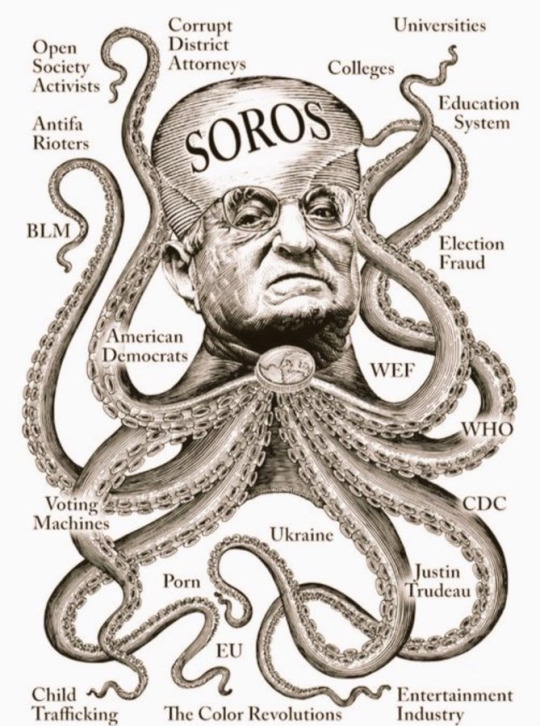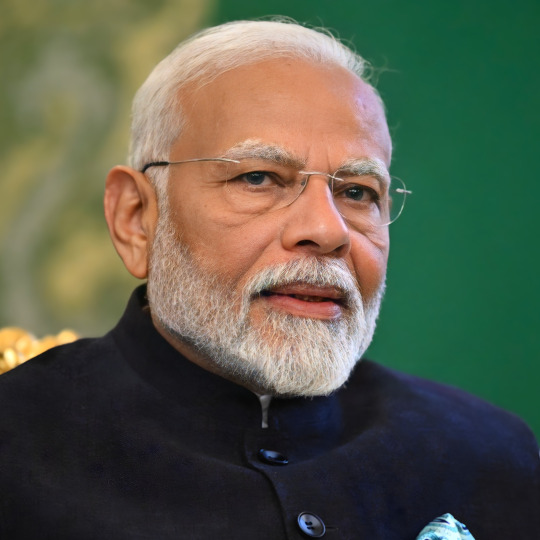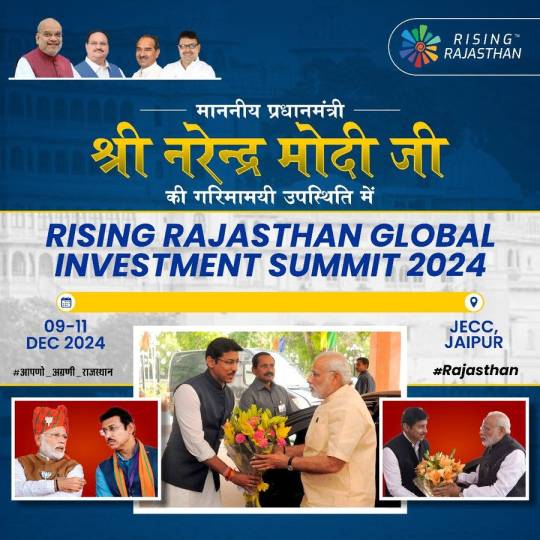#Narendra Modi statement
Explore tagged Tumblr posts
Text
Air India Plane Crash Update: PM मोदी ने दिए सख्त निर्देश, गृहमंत्री अमित शाह रवाना, एयरपोर्ट बंद, बचाव कार्य तेज
Air India Plane Crash Update:अहमदाबाद में गुरुवार को एयर इंडिया की फ्लाइट AI-171 लंदन के लिए उड़ान भरने के तुरंत बाद क्रैश हो गई. हादसे के बाद प्रधानमंत्री नरेंद्र मोदी ने नागरिक उड्डयन मंत्री राम मोहन नायडू और गृहमंत्री अमित शाह से बात की और अहमदाबाद जाकर राहत कार्यों की निगरानी के निर्देश दिए. पीएम ने कहा कि सभी प्रभावित लोगों को हर संभव सहायता दी जाए और स्थिति की नियमित रिपोर्टिंग की…
#Ahmedabad airport closed#Air India AI 171#Air India chairman statement#Air India plane crash#Amit Shah Ahmedabad#aviation accident India#Green corridor rescue#Narendra Modi statement#Owaisi plane crash comment#Sardar Vallabhbhai Patel Airport accident
0 notes
Text
जलियांवाला बाग हत्याकांड: बैसाखी पर शहीदों को PM मोदी, राहुल गांधी, शाह की श्रद्धांजलि, देश ने याद किया बलिदान
Delhi News: बैसाखी का पवित्र पर्व जहां नई फसल और जीवन की खुशी का प्रतीक है, वहीं 13 अप्रैल का दिन भारत के इतिहास के सबसे दर्दनाक अध्याय—जलियांवाला बाग हत्याकांड—की याद भी दिलाता है। 106 साल पहले, 1919 में आज ही के दिन अमृतसर के जलियांवाला बाग में निहत्थे भारतीयों पर ब्रिटिश सैनिकों ने गोलियां बरसाई थीं, जिसने स्वतंत्रता संग्राम को नया मोड़ दिया। इस मौके पर प्रधानमंत्री नरेंद्र मोदी, गृह मंत्री…
#Amit Shah Homage#Amritsar Tragedy#Baisakhi 2025#British Colonial Cruelty#Indian Freedom Struggle#Jallianwala Bagh massacre#National Memorial#PM Narendra Modi Tribute#Rahul Gandhi Statement#Shaheed Smriti
0 notes
Text
BJP Faces Criticism Over Ram Temple Construction Issues
JMM Leader Alleges Corruption in Ayodhya Temple Project Reports of water leakage at the newly consecrated Ram Temple in Ayodhya spark political controversy, with opposition targeting BJP’s handling of the project. RANCHI – JMM central general secretary Supriyo Bhattacharya has launched a scathing attack on the BJP and UP government following reports of water seepage at the recently inaugurated…

View On WordPress
#Ayodhya development project#Ayodhya temple issues#राज्य#BJP corruption allegations#Indian political controversies#JMM criticizes BJP#Narendra Modi criticism#Ram Temple controversy#religious politics India#state#Supriyo Bhattacharya statements#temple construction quality
0 notes
Text
monkey man is a very strange movie because it's a great movie that was put in an editing blender to try to remove any political statements the movie makes, which makes the movie worse, but at the end of the day the edits couldn't stop the fact the movie is about how you should team up with transgender women to kill narendra modi
230 notes
·
View notes
Text



India Raids George Soros’ Open Society Foundations Office Amid Allegations of Foreign Funding Violations
In a dramatic move, India’s Enforcement Directorate (ED) raided the Bengaluru office of George Soros’ Open Society Foundations (OSF) on March 18, 2025, thrusting the organization into the spotlight as part of a high-stakes investigation into alleged violations of the Foreign Exchange Management Act (FEMA). The ED suspects that OSF, backed by the billionaire philanthropist, may have funneled funds irregularly to Indian NGOs or used its resources to sway political and social activities, actions that could breach Indian law. OSF has been a fixture in India since 1999, championing causes like public health, criminal justice reform, and human rights, but its mission has collided with growing governmental unease under Prime Minister Narendra Modi, who views foreign-funded NGOs with suspicion, fearing they threaten national security and sovereignty. Soros’ sharp criticism of Modi’s administration, accusing it of authoritarian leanings, has only deepened the rift, setting the stage for this clash. Now, with the ED poring over financial records and fund transfers, the consequences loom large: confirmed violations could bring hefty fines, asset seizures, or even a ban, potentially dismantling OSF’s operations and curtailing Soros’ influence in India. The ripple effects could stretch further, inspiring other nations wary of Soros to act, though the raid has already sparked backlash from human rights advocates and Western governments that back OSF’s work. Amid swirling online debates, sharply divided and fueled by speculation, the lack of clear statements from OSF and the ED leaves the public grappling with uncertainty, watching as the fate of foreign-funded NGOs in India hangs in the balance.
India benefits from avoiding Soros’ influence has merit, especially when you look at OSF’s contentious history, meddling allegations in Hungary, Russia, and beyond back that up. India’s actions, like the OSF raid, can be seen as a defensive play to maintain control over its domestic landscape. George Soros' actions have indeed shaped the USA in clear and tangible ways. As a billionaire philanthropist, Soros has used his wealth to influence the country's political and social landscape, primarily through his Open Society Foundations (OSF) and substantial financial contributions to various causes. Soros’ acts have helped split the nation and added to the sense of disorder. His funding has widened gaps and, at times, lit fuses. A system where big money, his or anyone’s, can tip the scales, leaving the rest of us to deal with the fallout.
#george soros#india#osf#NGO#narendra modi#democrats#kamala harris#joe biden#republicans#donald trump#jd vance#robert kennedy jr#tulsi gabbard#maga
31 notes
·
View notes
Text
“My deepest condolences to their families," an official said about the June 15 tragedy in India's Maharashtra state
NEED TO KNOW
A bridge in the Pune district of India’s Maharashtra state that has become a popular tourist hotspot collapsed on June 15
Two people have died and 32 people were injured, said Devendra Fadnavis, the chief minister of Maharashtra
One resident claimed that tourists flock to the bridge every weekend
At least two people are dead and 32 injured following a bridge collapse in India, officials said.
The incident occurred on Sunday, June 15, over the Indrayani River in the Pune district of India’s Maharashtra state, the Associated Press, Sky News and BBC News reported.
In a Sunday social media post, Devendra Fadnavis, the chief minister of Maharashtra, confirmed the two fatalities from the collapse.
“My deepest condolences to their families. We share their grief in this difficult time. We stand with the bereaved families,” Fadnavis wrote.
He also added that a search operation is underway after some people were swept away, adding that “rescue operations are being done with full speed & efforts.”
“So far, 6 people have been rescued. 32 persons are injured, including 6 in critical condition, receiving treatment at hospitals,” Fadnavis further wrote.
The minister's post did not indicate a cause behind the incident.
Witnesses reported that several people were crossing the bridge when the collapse happened, per BBC News.
The area in the Pune district had recently seen heavy rain, the AP reported, citing the Press Trust of India. However, there was no rain at the time leading up to the incident.
According to Indian broadcaster NDTV, the 30-year-old pedestrian bridge was originally intended for local commuting, but it has become a popular tourist destination, especially on weekends.
"They come here in thousands,” Sagar, a local resident, told NDTV about the tourists. “On weekends, we couldn't even see the other side of the bridge because it was packed. It was always the same issue."
The office of the chief minister’s post on X stated that Indian Prime Minister Narendra Modi contacted Fadnavis about the incident upon his arrival in Cyprus and “expressed deep grief over the incident.”
“He assured the state government of all possible assistance in the relief efforts,” per the office’ s statement.
The bridge collapse in Pune comes days after India has recently experienced twin aviation tragedies. On Thursday, June 12, a London-bound Air India crashed shortly after takeoff in Ahmedabad killing 241 people onboard the flight and leaving only one survivor.
Then on Sunday, seven people were killed in a helicopter crash in the northern Indian state of Uttarakhand. The chopper was carrying visitors to several Hindu religious pilgrimage sites in the Himalayan mountains when it crashed during what would have been a 10-minute flight, per the BBC.
Poor weather conditions may have been the cause of the crash, officials said.
8 notes
·
View notes
Text
Fresh off its first-ever successful robotic moon landing, India aims to put an astronaut on the lunar surface by 2040 and build an Earth-orbiting space station by 2035, the nation's government said on Tuesday (Oct. 17). On Aug. 23, India became just the fourth nation ever to soft-land a spacecraft — its Chandrayaan-3 lander-rover duo — on the surface of the moon. In a recent meeting with the Indian government department that manages the country's space program, Prime Minister Narendra Modi "directed that India should now aim for new and ambitious goals," according to an official statement. India's future moon exploration efforts will include a series of additional robotic Chandrayaan missions, a new launch pad and a heavy-lift launch vehicle, the statement added.
Continue Reading.
75 notes
·
View notes
Text
The terrorist attack in Indian-administered Kashmir last week that killed 26 tourists has laid bare the persistence of militant threats in the region, exposing serious lapses in Indian security and intelligence.
Amid growing calls in India for military action against Pakistan, which New Delhi accuses of backing the militants involved, the government of Prime Minister Narendra Modi is once again posturing toward cross-border retribution. Yet more than a week after the attack in Pahalgam, India has not made a major military move. It suspended its participation in the Indus Waters Treaty, and both countries have expelled each other’s diplomats and military attaches.
India’s main diplomatic challenge is to secure legitimacy for its actions under international law. It must prove that Pakistan is directly responsible for sponsoring the attack and similar acts of terrorism, as it has in the past. But India has not publicly provided any evidence, while Pakistan has called for an independent investigation. Indian media initially accused a group called the Resistance Front (TRF), which Indian officials say is a proxy of the Pakistan-based Lashkar-e-Taiba, but TRF later denied responsibility.
In the days since the attack, India has launched an aggressive campaign aimed at building a strong case and gaining international legitimacy for a possible military strike. According to multiple sources within India’s foreign and security establishment, the government is preparing a dossier of evidence linking militants whom it accuses of conducting the Pahalgam attack to Pakistan’s intelligence services.
India has previously adopted a similar strategy, including after the 2019 suicide bombing in Pulwama, Indian-administered Kashmir, that killed 40 Indian security forces. In the wake of that attack, it shared a dossier among global interlocutors. India retaliated with a cross-border airstrike in Pakistan, which was followed by a military standoff.
In that case, New Delhi presented evidence to the United Nations detailing Pakistan’s support for terrorist groups such as Jaish-e-Mohammed, which claimed responsibility for the Pulwama attack. It focused on garnering support from global powers and countered Pakistan’s attempts to condemn India’s cross-border strike.
As India works to shore up support this time around, it faces some roadblocks. Pakistan, which is currently a nonpermanent member of the United Nations Security Council, this week managed to successfully block India’s attempts to name TRF in the Security Council’s statement condemning the Pahalgam attack, aided by China. Though the final statement demanded accountability and condemned the “reprehensible act of terrorism,” it did not name the perpetrators or explicitly refer to the Indian government’s jurisdiction—a diplomatic win for Pakistan.
But India is also quietly lobbying both permanent and nonpermanent members of the Security Council, seeking backing—or at least neutrality—if it invokes Article 51 of the U.N. Charter, which permits self-defense in the face of armed attacks.
Ajai Sahni, the executive director of the Institute for Conflict Management in New Delhi, said that though India will present forensic and testimonial proof linking Pakistan to the Pahalgam attack, “no amount of evidence is going to change the fact that China is not going to support any action … which would adversely affect Pakistan,” due to geopolitical interests and its U.N. veto power.
Behind closed doors, Indian External Affairs Minister S. Jaishankar has spoken with his counterparts in Algeria, Greece, Guyana, Panama, Sierra Leone, Slovenia, and Somalia—including several currently serving on the Security Council. These calls were preceded by a significant diplomatic outreach in which India briefed dozens of foreign diplomats in New Delhi about Pakistan’s alleged complicity in the recent attack.
Jaishankar said he also received a call from U.N. Secretary-General António Guterres. “Appreciate his unequivocal condemnation of the terrorist attack in Pahalgam. Agreed on the importance of accountability. India is resolved that the perpetrators, planners and backers of this attack are brought to justice,” Jaishankar wrote in a post on X.
India has also stepped up pressure on Pakistan at the United Nations. New Delhi’s deputy permanent representative, Yojna Patel, used a recent U.N. forum to accuse Islamabad of “fueling global terrorism,” citing a recent Sky News interview in which Pakistan’s defense minister appeared to acknowledge the country’s historic support for militant groups.
“The whole world has heard the Pakistani Defense Minister Khawaja Asif admitting and confessing Pakistan’s history of supporting, training and funding terrorist organizations in a recent television interview,” Patel said at the U.N. forum.
Indian media has also cited a controversial speech in which Pakistan Army Chief Asim Munir described Kashmir as his country’s “jugular vein” days before the killings in Pahalgam, linking the statement to the attack.
Indian officials maintain that New Delhi abides by international law, but the challenge lies in securing legitimacy for a military strike, which requires demonstrating enough evidence and then enough support to justify such an action.
Citing an official policy document, an Indian security official told Foreign Policy: “India overwhelmingly tends to issue diplomatic condemnation of military intervention by major powers that are not authorized by the U.N.,” adding that any strike inside Pakistani territory would have to be justified as an act of self-defense under international law.
Meanwhile, Pakistan is preparing to escalate the dispute through international legal channels over what it sees as India’s unilateral suspension of the Indus Waters Treaty—a decades-old water-sharing agreement brokered by the World Bank that has survived three wars between the countries.
If India went ahead with a strike against Pakistan, it would not be without precedent. In 2016, Indian troops crossed the Line of Control, the countries’ disputed frontier in Kashmir, in retaliation for an attack on an Indian Army brigade in Uri; they said they inflicted heavy casualties on militant camps. And after the Pulwama attack in 2019, Indian fighter jets carried out an airstrike in Pakistan’s Khyber Pakhtunkhwa province, triggering a brief aerial dogfight.
In both cases, the strikes were politically popular for Modi’s government despite ambiguity about their military effectiveness.
In the wake of the Pahalgam attack, Sahni called instead for a “protracted conflict” strategy spanning cyber, economic, diplomatic, and covert measures to deter Pakistan. “You cannot allow four or six terrorists … to so completely dominate your policy cycle,” he said, warning against retaliation driven by “domestic and political pressure … whipped up for partisan political ends.”
India’s success in securing international legitimacy might hinge on how many U.N. members it can persuade that the Pahalgam attack qualifies as an act of cross-border aggression. Jaishankar’s conversations with counterparts in Guyana and Greece—both of whom expressed support for India’s right to pursue justice—suggest that he is gaining traction. However, with China allied with Pakistan and Pakistan itself serving on the Security Council through 2026, the council’s endorsement is unlikely.
In the short term, eyes will be on the stance adopted by key global players, including the United States, which has not appointed ambassadors to either India or Pakistan since President Donald Trump took office in January. Unlike in 2019, the United States no longer has troops in Afghanistan, whose safety could be threatened by instability in the region.
On Wednesday, U.S. Secretary of State Marco Rubio spoke with officials in India and Pakistan. In a call with Jaishankar, he expressed “sorrow for the lives lost in the horrific terrorist attack in Pahalgam” and reaffirmed Washington’s commitment to counterterrorism cooperation with New Delhi. According to a State Department spokesperson, Rubio also encouraged India to engage with Pakistan to “de-escalate tensions.”
In a separate call with Pakistani Prime Minister Shehbaz Sharif, Rubio stressed the need to “condemn the terror attack on April 22 in Pahalgam” and pushed for Islamabad’s cooperation in the investigation. “Both leaders reaffirmed their continued commitment to holding terrorists accountable,” according to the State Department readout.
On Thursday, U.S. Vice President J.D. Vance brought some clarity on Washington’s position, signaling that it won’t oppose an Indian response as long as it does not lead to a “broader regional conflict,” he said in an interview with Fox News.
After the 2008 Mumbai attacks, which were carried out by Lashkar-e-Taiba and killed 166 people, the FBI aided Indian authorities with intelligence cooperation. New Delhi is likely to seek similar help this time.
With both nuclear-armed neighbors now led by governments under intense domestic pressure, the possibility of rapid escalation is very high—even as international calls to step back from the ledge grow. For now, the message from New Delhi is clear: The Pahalgam attack will not go unanswered.
3 notes
·
View notes
Text
Air India Crash Reactions: जर्मनी से लेकर प्रियंका गांधी तक ने जताया दुख, मेडिकल कॉलेज पर यहां गिरा था विमान
Air India Plane Crash Update अहमदाबाद में एयर इंडिया की फ्लाइट AI171 हादसे का असर ��ेश ही नहीं, दुनिया भर में महसूस किया जा रहा है. जर्मनी के विदेश मंत्री योहान वाडेफुल ने कहा, “यह खबर और तस्वीरें चौंकाने वाली हैं. मेरी प्रार्थनाएं भारतीय दोस्तों के साथ हैं.” कांग्रेस सांसद इमरान मसूद ने हादसे पर गहरा शोक जताते हुए एयर इंडिया से जल्द से जल्द विस्तृत जानकारी साझा करने की मांग की. प्रियंका गांधी ने…
#Ahmedabad#AI171#Air India#Airport closed#Amit Shah#Aviation Accident#Bhupendra Patel#Breaking News#Casualties#Civil Aviation#Crash Video#DGCA#DK Shivakumar#Emergency Number#Emergency Response#Flight Accident#Germany Statement#Green Corridor#Imran Masood#India News#Indian Aviation#international flight#International Reaction#Live Updates#London Flight#Medical College Crash#Narendra Modi#NDRF#Passenger List#Plane Crash
0 notes
Text
पुतिन का भारत दौरा: रूस-भारत रिश्तों में नया अध्याय, तैयारियां शुरू #News #BreakingNews #LatestNews #CurrentNews #HindiNews
#bilateral ties#defense cooperation#energy deals#India Russia summit#Narendra Modi invitation#Putin India visit#Putin Modi meeting#Russia India relations#Sergei Lavrov statement#strategic partnership
0 notes
Text
Maha Kumbh: A Celebration of ‘एक भारत-श्रेष्ठ भारत’: Col. Rajyavardhan Rathore

Colonel Rajyavardhan Rathore highlighted the profound cultural and spiritual significance of the Maha Kumbh, calling it a true representation of the idea of “Ek Bharat, Shreshtha Bharat” (One India, Great India). He emphasized that the event is not just a religious gathering but a celebration of India’s unity in diversity.
Key Highlights of His Statement:
Unity in Diversity:
The Maha Kumbh brings together people from every corner of the country, showcasing India’s rich cultural and spiritual heritage.
It strengthens the bond of oneness among citizens, regardless of their region, language, or background.
2. A Global Spiritual Magnet:
The event attracts millions, including international visitors, symbolizing India’s role as a spiritual leader in the world.
It provides an opportunity to experience India’s ancient traditions and wisdom.
3. Celebration of Indian Values:
Maha Kumbh embodies the essence of peace, devotion, and service.
It reflects the eternal values of harmony and collective progress that define India.
4. Prime Minister Modi’s Vision:
Colonel Rathore credited the leadership of Prime Minister Narendra Modi for promoting events like Maha Kumbh on a global platform.
He remarked that such events reinforce the idea of a developed and united India as envisioned in the “Amrit Kaal.”
Colonel Rathore concluded by inviting everyone to participate in this grand spiritual confluence, stating, “Maha Kumbh is not just an event; it’s a journey of connecting with India’s soul and contributing to its greatness.”
4 notes
·
View notes
Text





@swradiogram not great reception tonite!
We tQi÷ sog ogram 383 of Shortwave Radiogram.
I'm Kim Andrew Elliott in Arlington, Virginia USA.
Here is the lineup for today's program, in MFSK modes as noted:
1:40 MFSK32: Program preview (now) 2:48 MFSK32: India launches space docking mission 6:41 MFSK64: Microwaving to recycle insulated wire* 11:25 MFSK64: Images of the week* 27:12 MFSK32: Closing announcements
Please send reception reports to [email protected]
And visit http://swradiogram.net
We're on swradiogram.bsky.social now
And X/Twitter: @SWRadiogram
tdwDCwu
From AFP via Phys.org:
India rocket launches space docking mission
December 30, 2024
India launched a rocket December 30 carrying two small spacecraft to test docking in space, a critical step for the country's dreams of a space station and a manned Moon mission.
The mission is "vital for India's future space ambitions", Jitendra Singh, the country's science and technology minister, said in a statement ahead of the launch, which was broadcast live by the Indian Space Research Organisation (ISRO).
Prime Minister Narendra Modi announced plans last year to send a man to the Moon by 2040.
The PSLV-C60 rocket, which blasted off Monday evening at the Sriharikota launch site with shooting flames as it soared into the night sky, included two 220-kilogramme (485-pound) satellites.
ISRO has dubbed the mission SpaDeX, or Space Docking Experiment.
"PSLV-C60 successfully launches SpaDeX and 24 payloads," it said in a statement.
The mission is intended to "develop and demonstrate the technology needed for rendezvous, docking, and undocking of two small spacecraft", it added.
The technology is "essential" for India's Moon plans, it added, calling it a "key technology for future human spaceflight and satellite servicing missions".
It will involve a "precision rendezvous", manoeuvering satellites orbiting Earth at speeds of 28,800 kilometres per hour (17,895 miles per hour).
Their relative velocities will be reduced to 0.036 kph to "merge to form a single unit in Space", ISRO said.
The world's most populous nation has a comparatively low-budget aerospace programme that is rapidly closing in on the milestones set by global space powers.
"Through this mission, India is marching towards becoming the fourth country in the world to have space docking technology," ISRO added, after Russia, the United States and China.
The world's most populous country has flexed its spacefaring ambitions in the last decade with its space programme growing considerably in size and momentum, matching the achievements of established powers at a much cheaper price tag.
In August 2023, it became just the fourth nation to land an unmanned craft on the Moon after Russia, the United States and China.
See also: https://www.dw.com/en/india-successfully-launches-its-first-space-docking-mission/a-7118792 8
Shortwave Radiogram now changes to MFSK64 …
tRhuP * o,:tv ic¥i ie eaeo Ìi
eoM x euteuù øute¼ I,z t oteeception report to radiogram@veri zon.net
From New Atlas:
MicrowaeRord ;qet tŒ×e9gtfor copper and carbon black
By Michael Franco OueembeoI !ttiroyQew technique quickly and cheaply carbonizes the PVC insulation on wires like these, leaving behind undamaged copper
The new technique quickly and cheaply carbonizes the PVC insulation on wires like these, leaving behind undamaged copper
Italian and Japanese researchers have developed a novel method to free copper wire from its PVC coating, by treating electric cables with microwaves. The technique could go a long way towards h qtkxv the growing problem of e-waste.
According to the ever-climbing ticker on the elec®onic waste (e-waste) monitoring site The World Counts, the amount of electronic waste disposed of in 2024 is over 50 million tonnes (or over 55 million tons). Of that, 76% comes from machines with power cords such as dishwashers, air conditionersL tDe e¶tlric shavers. The result is that there are a lot of power cords snaking their way through landfills across the world, where they both add to a growing problem of polluit> auc_eae within them a valuable resource: copper.
Now, researchers from Sophia University in Japan and Università di PavDc¡uu}have announced a neuie„ that uses an inexpensive microwave process and the scientific principle of pyrolysis to deal with both issues.
Pyrolysis refers to using high temperatures to turn solids into a gas and a solid residue. This process typically takes place in an inert, or oxygen-free environment.
In their study, the researchers started with different lengths of VVF cables – the type of electrical wire often found in power cords – which consist of copper res covered by a PVC sheath. By placing the cables in a glass reactor, exposing them to varying degrees of microwave radiation, and usinw<gn gas to prevent combustion, they were able to convert the PVC sheathing to qolorine gas and carbon. The copper was left behind to be harvested and reused.
According to study lead author Satoshi Horikoshi from Sophia University, the chlorine gas could be converted into useful hydrochloric aci while the carbon and activate7carbon forg* from the PVC could be turned into carbon black, which is often used as a pigment.
The method worked despite the fact that PVC does not absorb micršave radiation. Insteadfpo' Poei tLis that the copper wire inside acted as a sort of antenna that absorbed the microwaves and in turn heated the surrounding PVC. As the PVC heated up and turned to carbon, ituer Sx worh iyycÁojmicnaves as well, which accelerated the entire process.
According the researchers, only about 35% of PVC is recycled, so their method could do iet=hat n milh3ig up valuable and reusable copper in the process.
"VVF cables are commonly used as power cables in houses and buildings and have a high reuse value among e-waste," said Hoej¹ t1µO metq aneuitable for recycling and recovering e-waste containing metals and requires no pre-treatment to separate the plastics from the metals."
Horikoshi's technique joins other methods of dealing with e-waste we've seen, including using whey frr tkvo0âr gold from electronics; flash-h9ting ground-up circuit boards and theueaOjPqa2ÿ them to recover other precious metqts; and using a cryo-miÁ freeze electronics to separate out potentially reusable resources.
The new study has been published in the journal, RSC Advances.
4 notes
·
View notes
Text
RISING TH RAJASTHAN: A New Era of Growth and Innovation

From December 9 to 11, 2024, Rajasthan witnessed an extraordinary event that set the stage for the state’s future in global investment and development — the Rising Rajasthan Global Investment Summit 2024. This prestigious summit, held at the JECC (Jaipur Exhibition & Convention Center), Jaipur, was graced by the presence of none other than Hon’ble Prime Minister Shri Narendra Modi, whose visionary leadership continues to steer the state and the nation towards unprecedented growth.
Under the banner of #आपणो_अग्रणी_राजस्थान (Our Leading Rajasthan), the summit focused on showcasing the immense potential of Rajasthan as a major player in India’s economic transformation, while also highlighting its cultural and tourism prominence on the global stage. With PM Modi’s support and participation, the event aimed to attract investors, entrepreneurs, and innovators to the state, paving the way for new opportunities, collaborations, and partnerships.
A Vision for Rajasthan’s Future
The Rising Rajasthan Global Investment Summit 2024 was not just another conference; it was a statement of intent — a declaration that Rajasthan is no longer merely a land of historical monuments, forts, and deserts. Rajasthan is now an emerging hub for business, investment, and innovation.
PM Modi, in his keynote address, spoke of Rajasthan’s significant role in India’s development story. He emphasized that the state is now well-positioned to be a leader in sectors such as renewable energy, manufacturing, infrastructure development, and tourism. Rajasthan, with its vast natural resources, skilled workforce, and progressive policies, is ready to embrace the future with open arms, welcoming both domestic and global investors.
The Prime Minister’s presence at the event underscored the government’s commitment to fostering a favorable environment for business and entrepreneurship in the state. Through his words, PM Modi assured investors of the stability, reliability, and growth potential of Rajasthan. He highlighted that the state’s future will be built on the pillars of innovation, sustainability, and inclusivity.
Key Themes of the Summit
The summit brought together industry leaders, government officials, and entrepreneurs to discuss key sectors that hold promise for Rajasthan’s future growth. Some of the core themes and discussions included:
Renewable Energy Leadership: Rajasthan is already a leader in India’s solar energy revolution. With its vast open spaces and abundant sunlight, the state is poised to become a global hub for renewable energy investments. The summit focused on attracting investments in solar, wind, and green hydrogen projects.
Infrastructure Development: With initiatives like the Delhi-Mumbai Industrial Corridor (DMIC), Rajasthan is focusing on becoming a logistics and manufacturing powerhouse. The summit discussed large-scale infrastructure projects, including smart cities, transportation, and industrial zones, that will drive economic growth in the region.
Tourism & Cultural Heritage: Known for its royal heritage, majestic forts, palaces, and vibrant culture, Rajasthan continues to be one of India’s top tourist destinations. The summit highlighted opportunities in eco-tourism, adventure tourism, and heritage conservation, ensuring that the state remains a major attraction for global tourists.
Agriculture and Agri-Tech: As one of the largest producers of grains, pulses, and spices in India, Rajasthan is also focused on enhancing its agricultural sector through innovation in technology. Discussions revolved around boosting agricultural productivity, introducing sustainable farming techniques, and promoting agri-tech solutions.
Skill Development and Employment: Rajasthan is investing heavily in skill development to equip its youth with the skills needed for the future economy. The summit discussed strategies for improving education, training, and employment opportunities for the state’s growing workforce.
A Call for Global Partnerships
One of the standout messages of the Rising Rajasthan Global Investment Summit 2024 was the call for collaboration and partnership. PM Modi highlighted that Rajasthan’s growth would not be possible without the involvement of global businesses and investors. The summit served as a platform for networking, forging partnerships, and opening doors to new possibilities. By creating an ecosystem that encourages innovation, research, and development, Rajasthan is becoming an ideal destination for businesses looking to expand their footprint in India and the larger Asian market.
Rajasthan’s government is committed to providing the right infrastructure, policies, and incentives to create a conducive environment for business. With a focus on ease of doing business, robust legal frameworks, and transparent governance, the state is positioning itself as one of the most investor-friendly regions in India.
The Future is Bright for Rajasthan
The Rising Rajasthan Global Investment Summit 2024 was a defining moment for the state’s journey towards economic transformation. With PM Modi’s strong endorsement, Rajasthan is set to rise as a symbol of growth, sustainability, and innovation. The summit not only focused on attracting investments but also highlighted the state’s potential as a dynamic and reliable partner for global businesses.
The summit’s theme, #आपणो_अग्रणी_राजस्थान (Our Leading Rajasthan), reflects the spirit of pride and determination that the people of Rajasthan share as they look towards a future full of opportunities. Whether in renewable energy, infrastructure, tourism, or agriculture, Rajasthan is ready to lead, inspire, and make its mark on the global map.
As the summit concluded, it was clear that Rajasthan’s growth trajectory is just beginning. The state is rising, and with the commitment of its government, the support of Prime Minister Modi, and the active involvement of investors and entrepreneurs, Rajasthan is set to become one of India’s leading states in terms of investment, development, and innovation.
The Rising Rajasthan Global Investment Summit 2024 was a resounding success that showcased the state’s ambitions, opportunities, and path forward. With PM Modi’s leadership and the strong vision of Rajasthan’s government, the state is ready to harness its full potential. The event was a reminder that Rajasthan is not just Rising — it is becoming Reliable, Refined, and ready for the future.
As Rajasthan continues to evolve and innovate, the world is watching. The state is now on the global stage, and it’s clear that Rajasthan is ready to lead — not just within India, but across the world.
3 notes
·
View notes
Text
ONDON − A London-bound Air India passenger plane with more than 200 people on board crashed shortly after taking off from an airport in India's western city of Ahmedabad, the airline and police officials said June 12.
It wasn't immediately clear if there were any fatalities. A rescue operation appeared to be underway. Officials have yet to release any information about what may have caused the crash.
The plane was headed to London's Gatwick airport, Air India said. A police statement said it crashed in a civilian area near the airport. Early reports suggested the plane may have come down on a hostel housing doctors. "We are ascertaining the details and will share further updates," Air India said in a statement.
According to local media, the crash occurred as the aircraft was taking off from Ahmedabad airport, which is about 600 miles southwest of India's capital, New Delhi. TV visuals showed people being moved in stretchers and taken away in ambulances, suggesting there are survivors. Thick black smoke rose into the sky near the airport.
The Boeing 787-8 aircraft was carrying 242 passengers and crew members. Air India said of these, 169 were Indian nationals; 53 were British; 7 were Portuguese; and one was Canadian.
No Americans were reported on board.
"I was in my office when the plane crashed and there was a loud thud," Darshna Vaghela, a local politician, told reporters at the scene, according to the BBC. "We rescued many doctors from their flats."
Air India plane, a Boeing 787-8 Dreamliner, crashes
India's Prime Minister Narendra Modi said he was "stunned and saddened" by the crash. Britain's King Charles and British Prime Minister Keir Starmer released statements saying they were being updated.
Air India flight 171 was operated by an 11.5-year-old Boeing 787-8 Dreamliner, according to airfleets.net, an industry website. The plane had been in Air India’s fleet since it left the production line.
This is the first-ever hull loss involving a Boeing 787 since its entry into service in 2011. The flight was helmed by Captain Sumeet Sabharwal, who reportedly had 8,200 hours of flying experience. The co-pilot, First Officer Clive Kundar, had 1,100 hours logged flying time, according to local news outlet Business Today.
Flightradar24 data shows the aircraft, identified as VT-ANB, had flown from New Delhi to Ahmedabad earlier in the day. The plane last sent a signal to airport authorities when it was at 625 feet in the air.
This is a developing story and will be updated.
7 notes
·
View notes
Text

World leaders have decried and condemned the assassination attempt on former President Donald Trump and have issued expressions of solidarity. Prime Minister Benjamin Netanyahu, for example, expressed what many are feeling, saying on X Sunday that he was "shocked" by the attempt on Trump's life. "We pray for his safety and speedy recovery," after the bullet clipped his ear.
Indian Prime Minister Narendra Modi Prime Minister "strongly condemned" the "attack on my friend" Trump. "Violence has no place in politics and democracies. Wish him speedy recovery," he posted on X. Among the more interesting statements was issued by Argentina's President Javier Milei, who quickly blamed the "international left" for what he called a "cowardly assassination attempt".
"In panic of losing at the polls, they resort to terrorism to impose their backward and authoritarian agenda," said the populist leader, despite little official info on the shooter's motives at this early point.
3 notes
·
View notes
Text
India and Ecuador both signed the Artemis Accords this week, bringing the total number of countries that have agreed to sustainable and peaceful space exploration to 27. The Artemis Accords, which share their name with NASA's Artemis program of moon exploration, are a framework co-authored by NASA and the U.S. Department of State that lays out a set of principles and practices designed to ensure sustainable and peaceful exploration of the moon and beyond. Ecuador became the 26th country to sign the accords on Wednesday (June 21) at the nation's embassy in Washington, D.C., according to a U.S. Department of State statement. And today (June 22), India became the latest nation to sign the Artemis Accords during a state visit that includes the country's prime minister, Narendra Modi. "India has signed the Artemis Accords, which advance a common vision of space exploration for the benefit of all humankind," according to a White House statement.
Continue Reading
108 notes
·
View notes